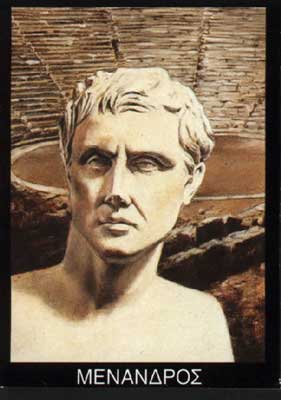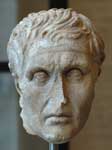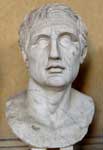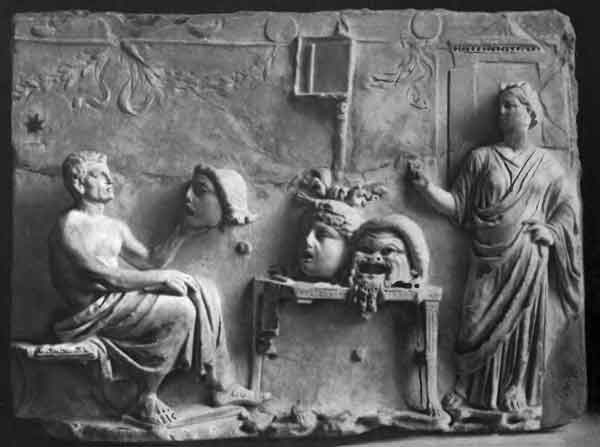|
|
 Menander, drawing of a Roman sculpture , copy of a work of , Menander resembles him in his keen observation of practical life, his analysis of the emotions, and his fondness for moral maxims, many of which became proverbial: "The property of friends is common," "Whom the gods love die young," "Evil communications corrupt good manners" (from the Thaiumls, quoted in 1 Corinthians 15:33). These maxims (chiefly monostichs) were afterwards collected, and, with additions from other sources, were edited as Menander's One-Verse Maxims, a kind of moral textbook for the use of schools. Menander found many Roman imitators. The Eunuchus, Andria, Heautontimoroumenos (The Self-Tormentor) and Adelphi of Terence (called by Caesar "dimidiatus Menander") were avowedly taken from Menander, but some of them appear to be adaptations and combinations of more than one play; thus, in the Andria were combined Menander's The Woman from Andros) and The Woman from Perinthos), in the Eunuchus, The Eunuch and The Flatterer, while the Adelphi was compiled partly from Menander and partly from Diphilus. The original of Terence's Hecyra (as of the Phormio) is generally supposed to be, not by Menander, but Apollodorus of Carystus. The Bacchides and Stichus of Plautus were probably based upon Menander's The Double Deceiver and Philadelphoi, The Brotherly-Loving Men, but the Poenulus, does not seem to be from The Carthaginian, nor the Mostellaria from The Apparition, in spite of the similarity of titles. Caecilius Statius, Luscius Lavinius, Turpilius and Atilius also imitated Menander. He was further credited with the authorship of some epigrams of doubtful authenticity; the letters addressed to Ptolemy Soter and the discourses in prose on various subjects mentioned by Suidas are probably spurious. Until the end of the 19th century, all that was known of Menander were the fragments collected by A. Meineke (1855) and T. Kock, Comicorum Atticorum Fragmenta (1888). They consist of some 1650 verses or parts of verses, in addition to a considerable number of words quoted expressly as from Menander by the old lexicographers. From 1897 to 1907, papyri were discovered in different parts of Egypt containing fragments of considerable length amounting to some 1400 lines. In 1897, about eighty lines of The Farmer; in 1899, fifty lines of The Shorn Woman (Perikeiromene), and, in 1903, two hundred lines from the middle of the same play; five hundred lines from The Arbitrants, generally well preserved; sixty-three lines (the prologue, list of characters, and the first scene), from The Hero; three hundred and forty lines from The Woman from Samos; and twenty lines from an unknown comedy. The complete manuscript of Peter Brown (Introduction), Maurice Balme (Translator), Oxford University Press; New Ed edition (May 1, 2002)
Retrieved from "http://en.wikipedia.org/ "
|
|
|||||||||||||||||



